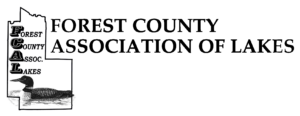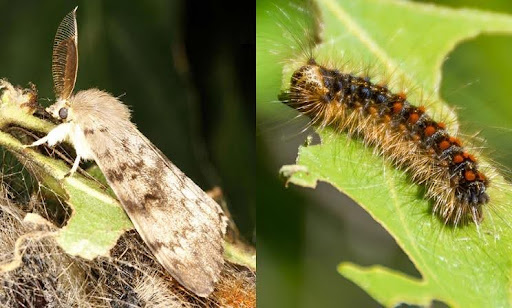Conservation Corner is a weekly article produced by the Forest County Land Conservation and Land Information Department. For more information contact Lucas O’Brien, Forest County Land Conservation Technician at 715-478-1387 or by e-mail at
The Spongy Moth in Wisconsin
The spongy moth (Lymontria dispar) formerly known as the gypsy moth, is an invasive pest that has been a concern in Wisconsin for decades. Known for its various appetite, this species can cause significant damage to trees and forests, particularly during outbreaks. Originally introduced to North America in the late 1800’s and has been slowly spreading. Its caterpillars feed on the leaves of over 300 tree and shrub species, with oak, birch, and aspen being among their favorites. During severe infestations, trees can be completely stripped of their leaves, leaving them vulnerable to disease, drought, and other stressors. In particular, the spongy moth has established itself across much of the state, particularly in the eastern and central regions. While populations fluctuate year to year, recent reports indicate a decline in their numbers in 2025 compared to previous years. However, the pest continues to spread westward, raising concerns for unquarantined counties where it is less common. Wisconsin has implemented several strategies to manage and mitigate the spongy moth. One strategy is quarantine measures, counties with established populations are under quarantine to prevent the accidental spread of egg masses. Residents and businesses are encouraged to inspect outdoor items before moving them out of these areas. Another strategy is biological control, which uses natural predators such as birds and mammals to keep populations in check. Additionally, a fungus and virus specific to the spongy moth have been effective in reducing outbreaks. A simpler strategy for people is to do public reporting. Residents are encouraged to report sightings of spongy moths in unquarantined areas by calling by calling 1-800-642-MOTH (6684) or emailing . The final strategy is homeowner action. Individuals can scrape off and destroy egg masses, use sticky bands on trees to trap caterpillars, and avoid moving firewood, which can harbor eggs. While the spongy moth remains a challenge, Wisconsin’s proactive management efforts and natural populations control have helped reduce its impacts in recent years. Continued vigilance and community involvement are essential to protect the state’s forest and landscapes from this invasive pest.

